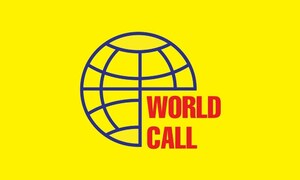In microeconomics, the cobweb theory explains why prices in certain markets – especially agriculture goods – may be subject to period fluctuation. The model suggests that if expectations about future prices are based purely on prices observed in past seasons, then supply can become subject to cyclicality due to lag between supply and demand decisions. To academics, the cobweb theory explains well the ‘sugar crisis’ witnessed periodically in Pakistan. Which raises the question, if fluctuations in supply are truly cyclical, could the crisis have been predicted and possibly, averted?
One golden rule in life is to remember that when a mistake appears obvious in hindsight, try to remember how uncertain the situation was in advance. In commodity trading, decision to gain from opportunistic export is driven by price competitiveness, which is hugely impacted by sudden devaluation of currency - key factor during both 2007-08 and 2018-19 spirals. And while recurrence of subsidies/quotas in election year (each time) may not appear entirely coincidental, it may help to remember that domestic producers – politically influential as they may be - do not, and cannot control prices in international markets.
What they can bet on, however, are domestic prices. When domestic supply is controlled, both by barriers to entry on (cheaper) imports and to new entrants, it takes no rocket scientist to predict that opportunistic exports coinciding with three seasons of falling production must send prices in full throttle. Are sugar exports bad then? In a country where exports are less than half of imports for a better part of the decade, there is no such thing. When government is desperate for foreign exchange, business groups just have to push the right buttons.

Which makes all this name calling on ‘collusive behaviour’, ‘cartelization’, and ‘cost audits’, merely a distraction. Readers must decide what is more becoming of a regulator: to ostracize an industry based on its history and political affiliations, raid its records, and raise suspicion on independent auditors? Or, to encourage competition by opening up the market to international trade and, removing license raj on entry of new players?
Increased competition certainly hasn’t killed Pakistan’s rice and feed milling industries; while (relatively) freer imports of soybean, and canola has made poultry more affordable for domestic consumers over the last decade. Entry of new players hasn’t also been bad for the sugar industry either: during the 2008-10 spiral, domestic prices (at their peak) were 2.3 times higher than global prices. By 2015, increased competition and expansion had led to investment in productivity. As a result, the latest price spiral wasn’t such a free-for-all as last time; and, premium to international prices was also reduced to 1.5 times.
In retrospect, it may appear that mistimed exports led to this mess, but volume exported accounts for less than 10 percent of available supply since surplus began to pile up four years ago. It is thus unreasonable to feel resentful towards sugar millers for seeking profit by increasing prices for domestic consumers, these are after all 90 percent of their market!
Instead, resent them for convincing us that more sugar mills are bad because they eat into cotton acres. Since FY16, sugar industry has seen no major expansion or new entrant, yet aggregate area under cotton and cane has declined by 20 percent. ‘Less competition is good for national interest’, that is the greatest trick devil ever pulled. For background on how that happened, read “Set the cane market free”, published on July 30, 2019 by BR Research.


























Comments
Comments are closed.